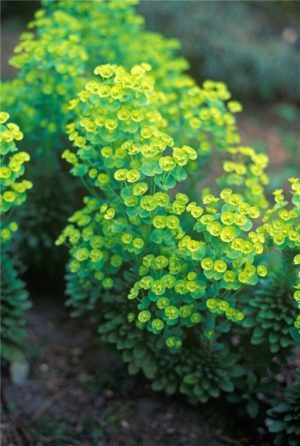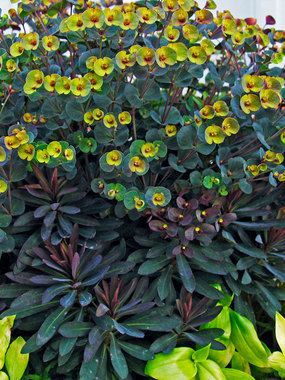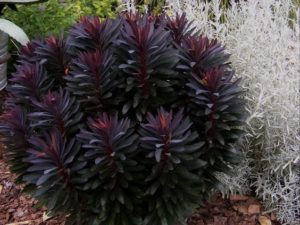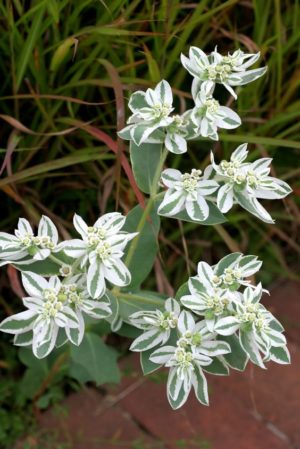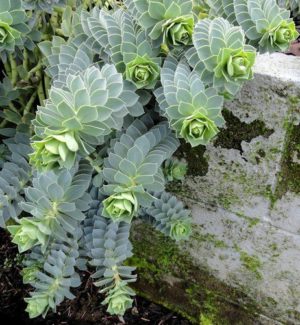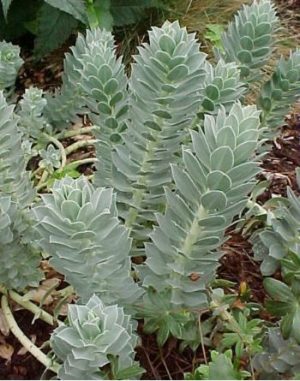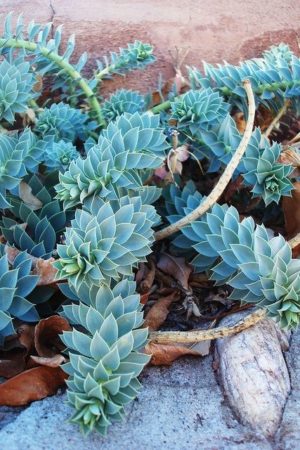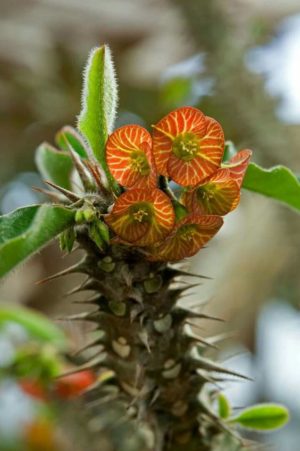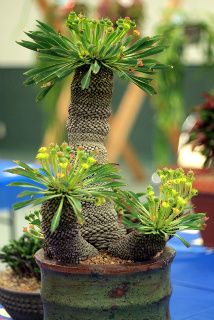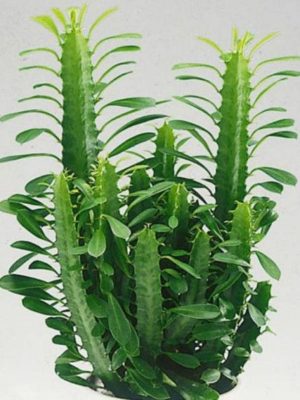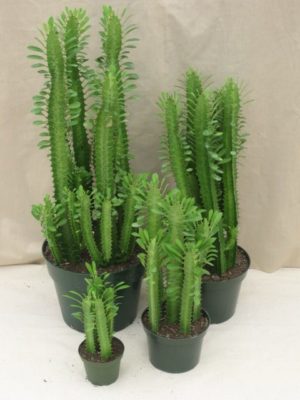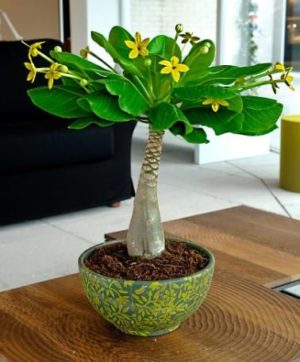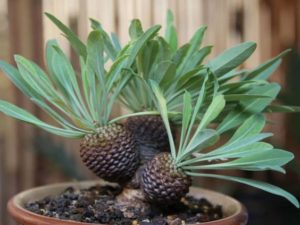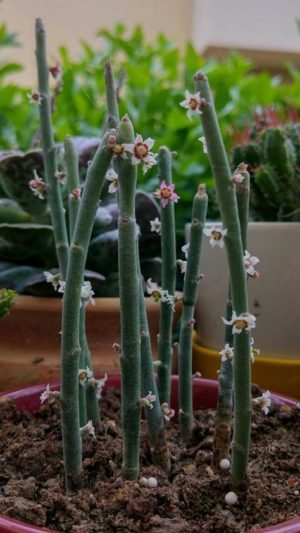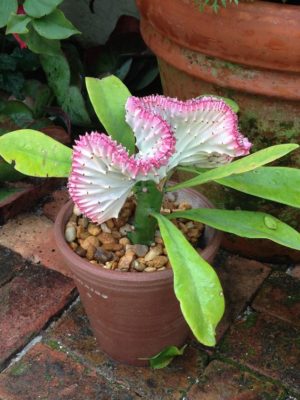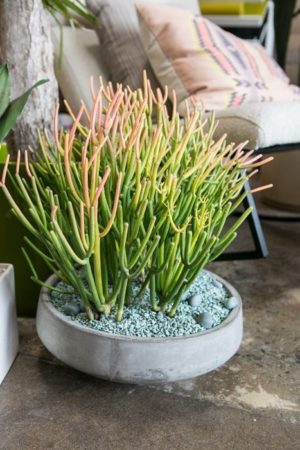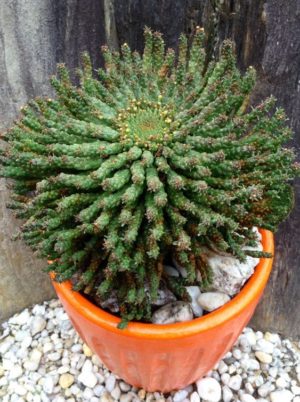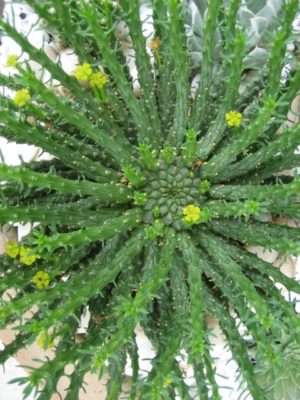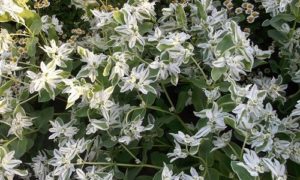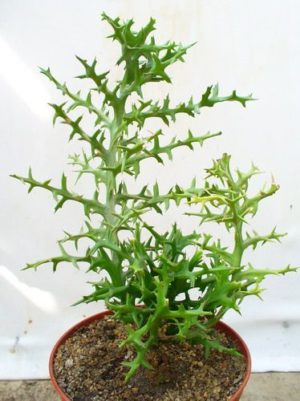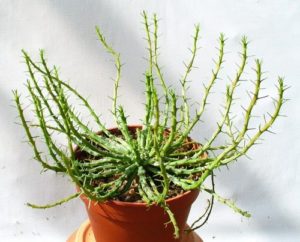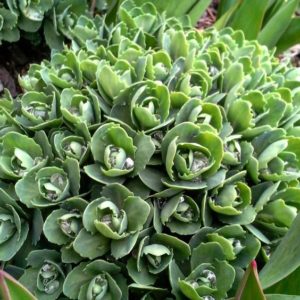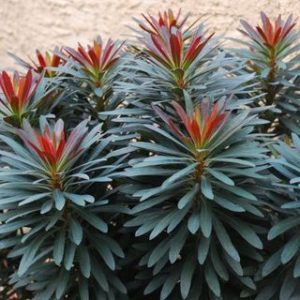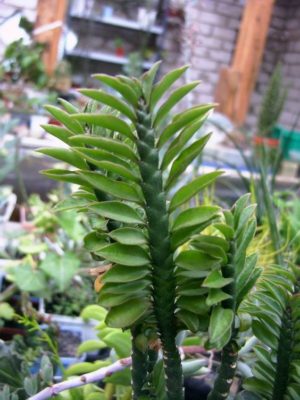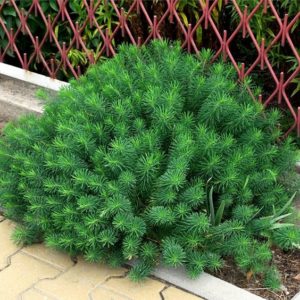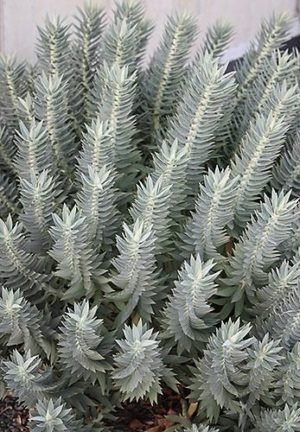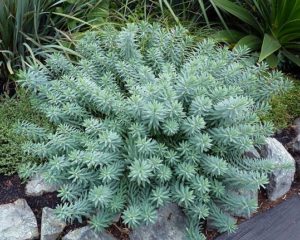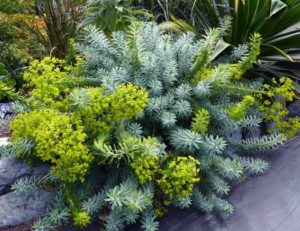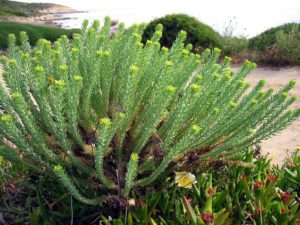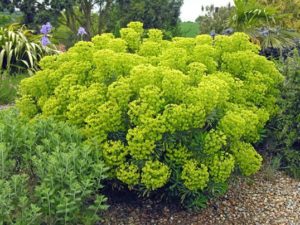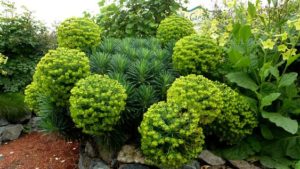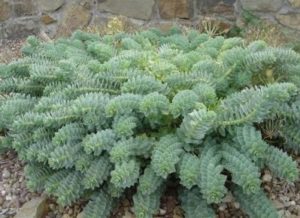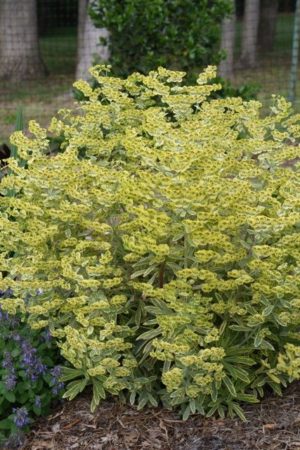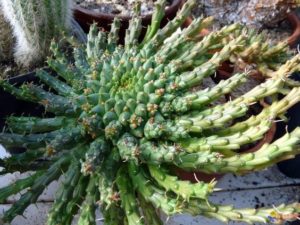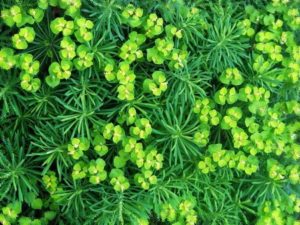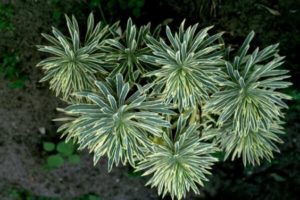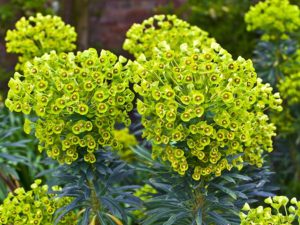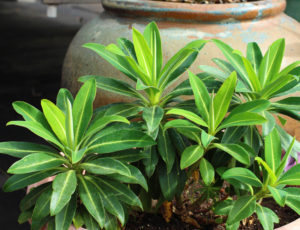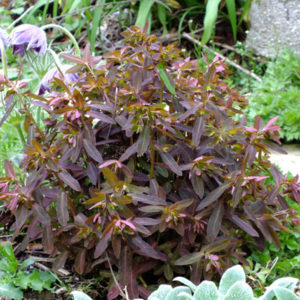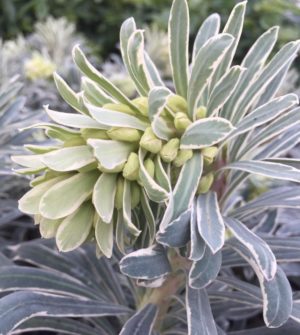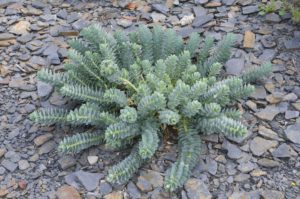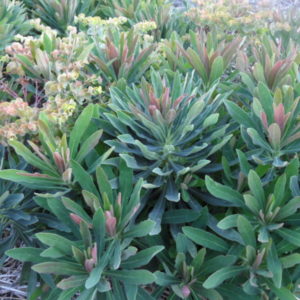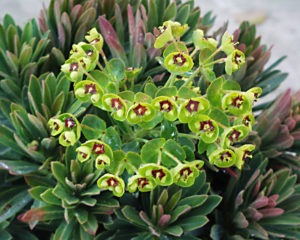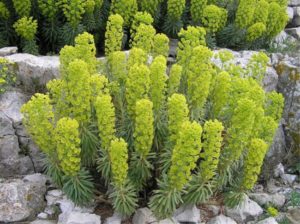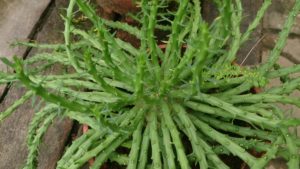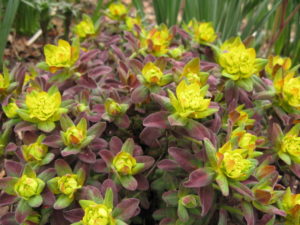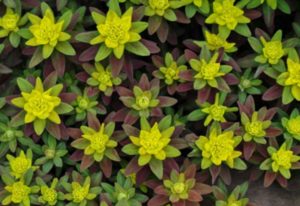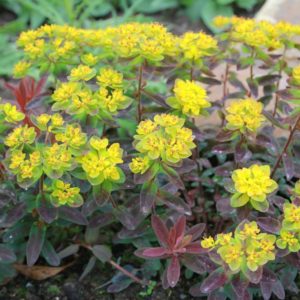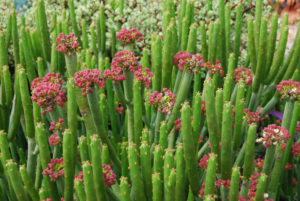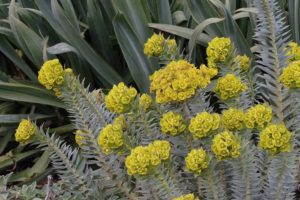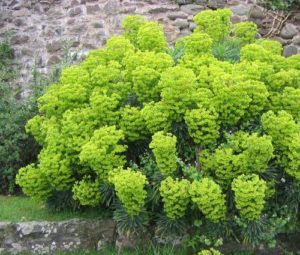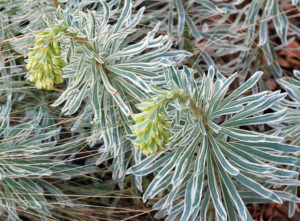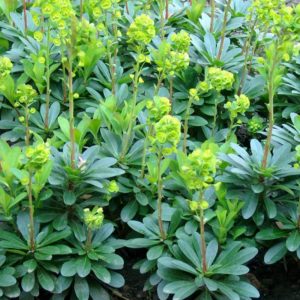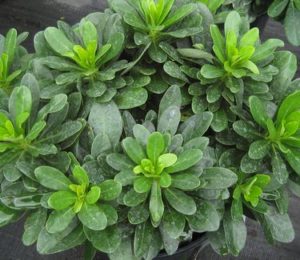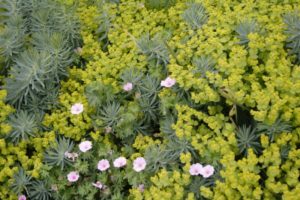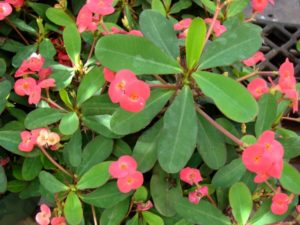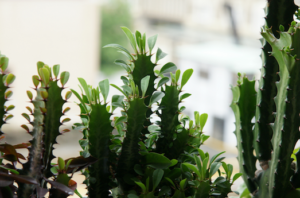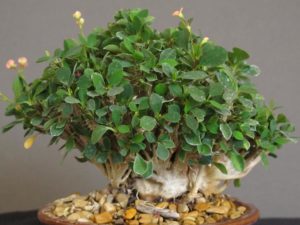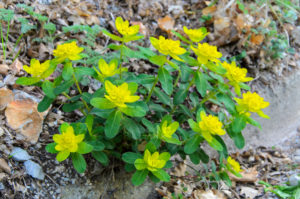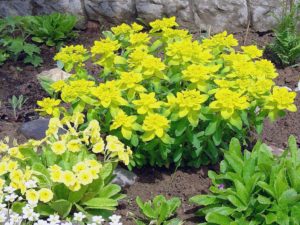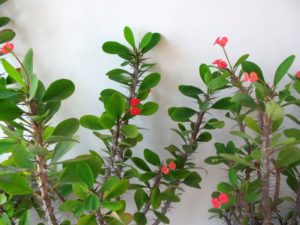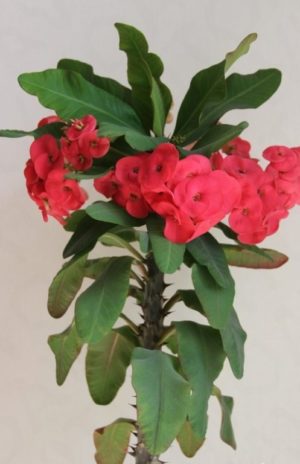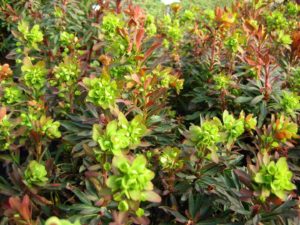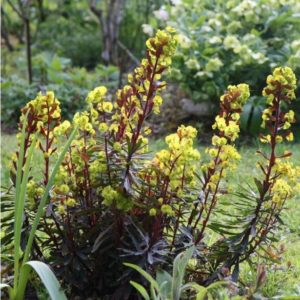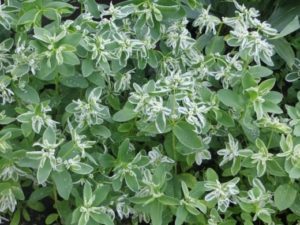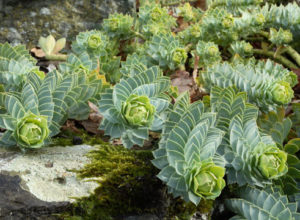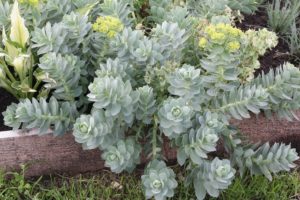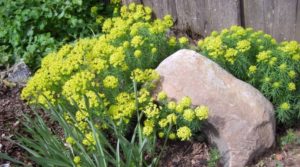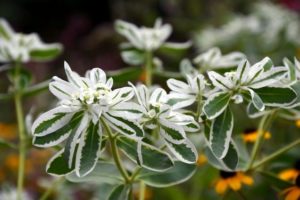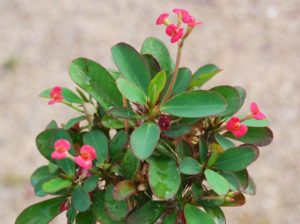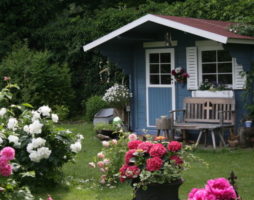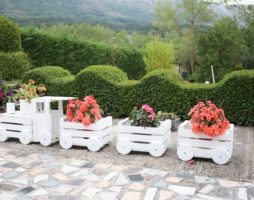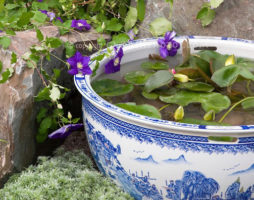Even having assembled a luxurious home greenhouse, true flower growers cannot get rid of the desire to improve it. Do you want to add something extraordinary to the composition? Find the Euphorbia flower in the photo. You will be impressed by its exotic beauty and variety of looks.
The Euphorbia family today is really represented in a huge species diversity, so it will be quite simple to choose exactly what the soul lacked.
A few words about milkweed
"The high decorativeness and unpretentiousness of the types of indoor euphorbia allows you to grow them not only in an apartment, but also use them in landscape design"
These magnificent succulents gave us the subtropics. Their biological homeland: Africa, America, Madagascar. Euphorbia (the second name for milkweed) may look like:
- tree;
- flower;
- bush.
Despite the abundance of natural forms, and their, at times, complete dissimilarity with each other, all types of euphorbia in the photo with names have one characteristic feature - they produce milky juice. The liquid is corrosive and unsafe. Its chemical composition contains toxic euphorbin. The substance irritates the mucous membranes and causes burns, so care must be taken with the plant carefully.
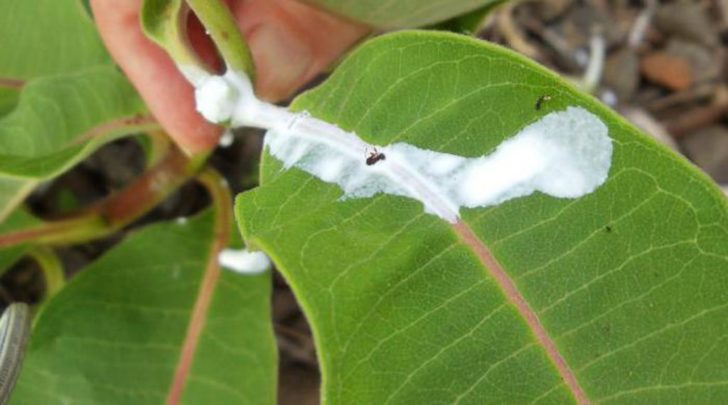
The milky juice of milkweed is poisonous
However, this moment is not a reason to make hasty conclusions about the dangers and, moreover, the dangers of each indoor milkweed flower seen in the photo. You may not even suspect that this particular species is produced on an industrial scale for the needs of folk and traditional medicine, cosmetology.
But back to our flower theme. The high decorativeness and unpretentiousness of the types of indoor euphorbia allows you to grow them not only in an apartment, but also use them in landscape design. In both cases, there are nuances.
back to index ↑Euphorbia in the garden
"Basic care for garden perennial euphorbia includes moderate watering and mineral dressing several times per season"
Representatives of the milkweed family are very tenacious. They don't care about drought. They do well in the sun. Many perennials are even ready to winter in the garden.
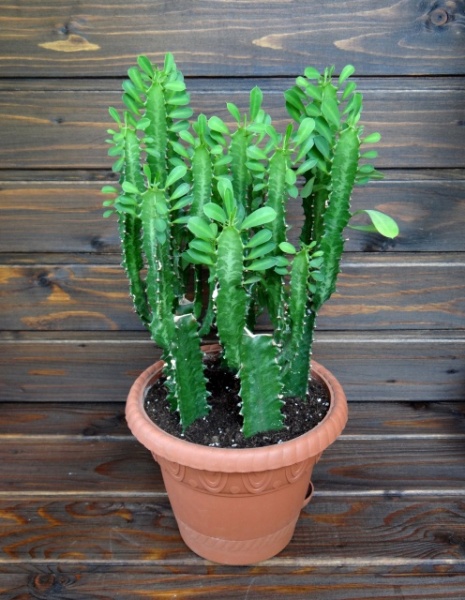
Euphorbia is unpretentious in care
The main care for garden perennial euphorbia includes moderate watering and the application of mineral dressing several times per season. Plants are practically not affected by pests and rarely get sick, so there is no need for spraying and other procedures.
As for breeding, many species reproduce by self-sowing, but there are also varieties that are grown from cuttings.
Euphorbia in landscape design
Euphorbia of any origin can be attracted to the design of the garden plot. Selecting an individual in a separate planting or using it in group compositions will be prompted by a photo of the type of milkweed flower. The plant looks great in combination with other flowering plants. The mix will look spectacular:
- with tulips
- bells,
- irises.
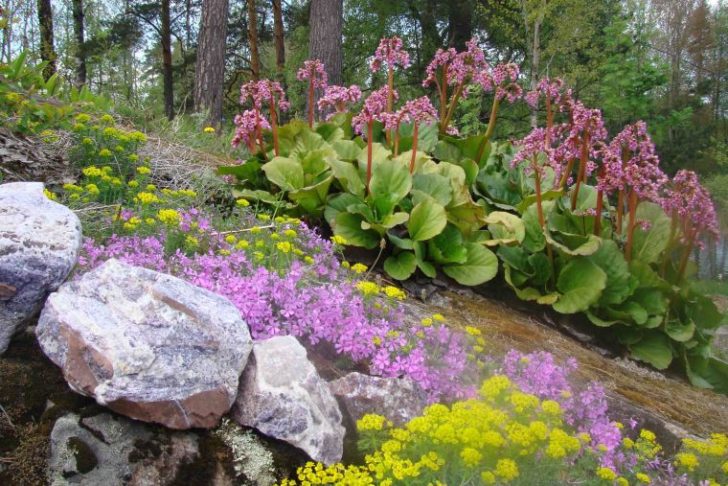
Euphorbia in the design of rock garden
Euphorbia garden perennial, for example, is bordered by plantings of dahlias and rosaries.
Globular spurge multicolored - a frequenter of mixborders. In addition, paths, rock gardens, and rockeries are often decorated with it. It looks great against the backdrop of lawns. And even the most unsightly corners of the garden are filled with a luxurious green shade, thereby transforming the territory beyond recognition.
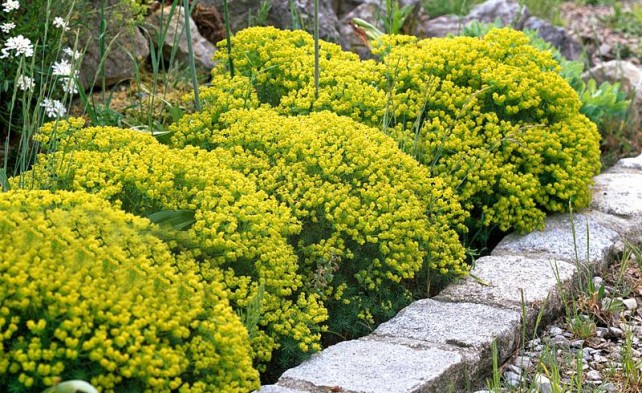
Globular spurge in the garden
Euphorbia in the house
The conditions for keeping the milkweed mile and others are identical to those for keeping succulents. They are planted in a mixture of leafy and clay-soddy soil with sand.
Quite plentiful in the spring-summer season, watering plants, almost completely stops in winter. They are transferred to dry content.
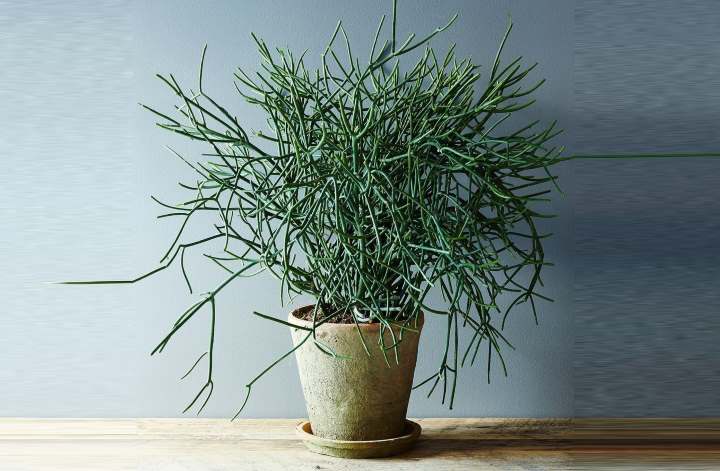
In winter, spurge almost does not need watering.
Many types of euphorbia do not respond well to cold. The minimum allowable temperature for the wintering of the African group of euphorbias is + 120C, for the Mediterranean - + 60C.
An adult indoor flower euphorbia does not need an annual transplant. It is permissible to change the pot for a larger one every few years.
Reproduction of indoor euphorbia occurs mainly by cuttings, less often by grafting and seeds.
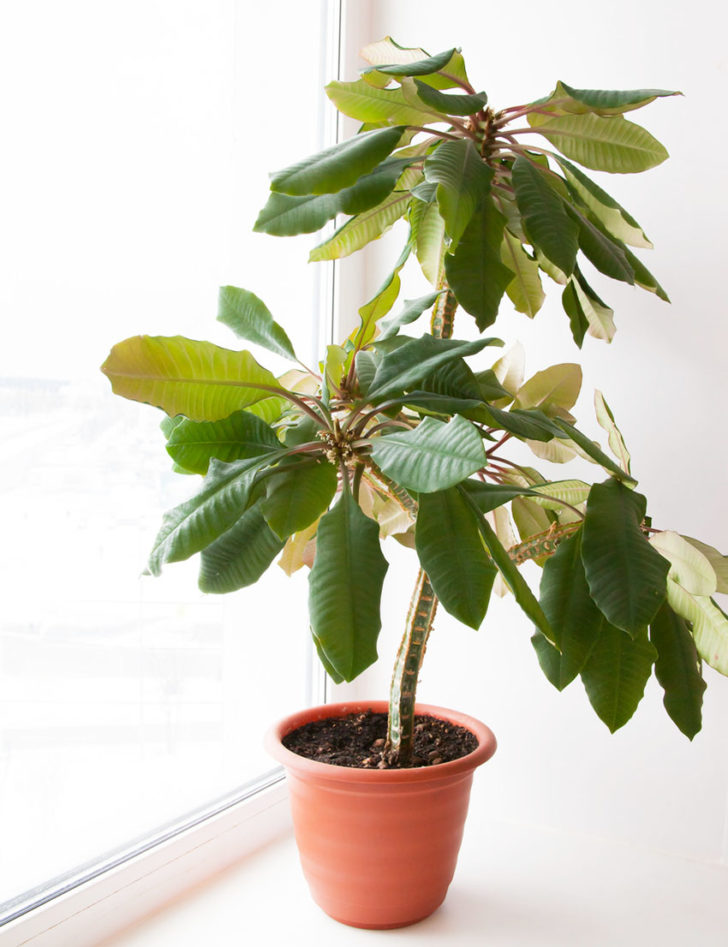
Euphorbia is transplanted every few years
Indoor spurges with photos and names
spurge mile
Chic year-round flowering perennial has the form of a profusely branching bush. Ellipsoid-shaped pale green leaves are located on the tops of grayish ribbed stems. Each leaflet is protected by a pair of stipules transformed into spines. As the flower grows, it loses leaf blades, but strong and sharp spines remain for life.
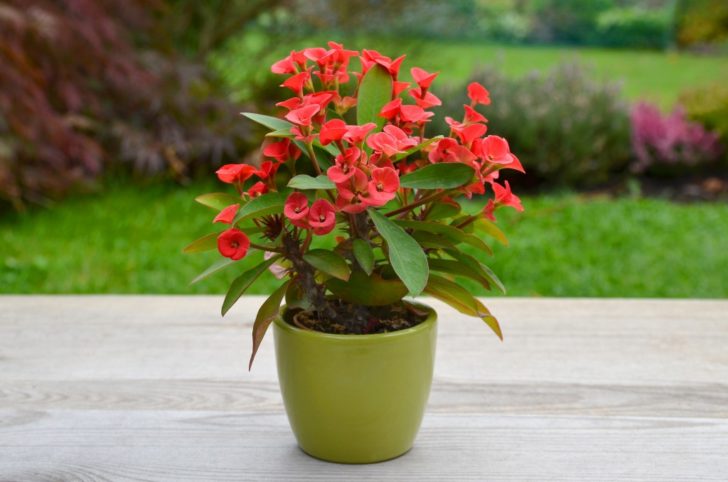
spurge mile
The photo of the milkweed mile shows that it blooms in prefabricated inflorescences, including from two to four flower groups. Each of them is framed by brightly colored bracts. Depending on the subspecies of the variety, they can be: scarlet, orange or yellow. Long green peduncles help the inflorescences to break through the thickets of thorns. How does the indoor flower of milkweed look in color, look at the photo.
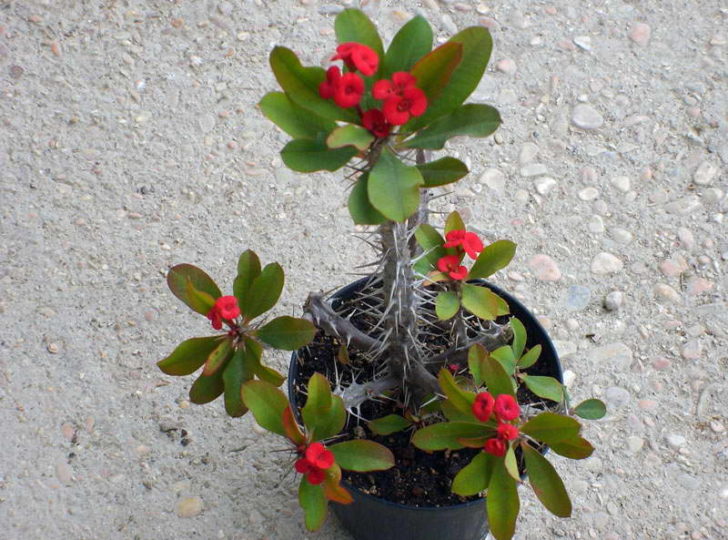
milkweed mile blossoms
Basic Requirements for Growing Milkweed Mile
Content Features
The place should be bright and sunny. In the warm season, the plant can be moved to the loggia. In winter, he will need an adequate temperature regime. At a low temperature in the room, spurge should be moved closer to the heaters so that the earth in the pot is always warm. Lack of light and heat, improper watering will cause the leaves of any kind of indoor milkweed to turn yellow and fall off.
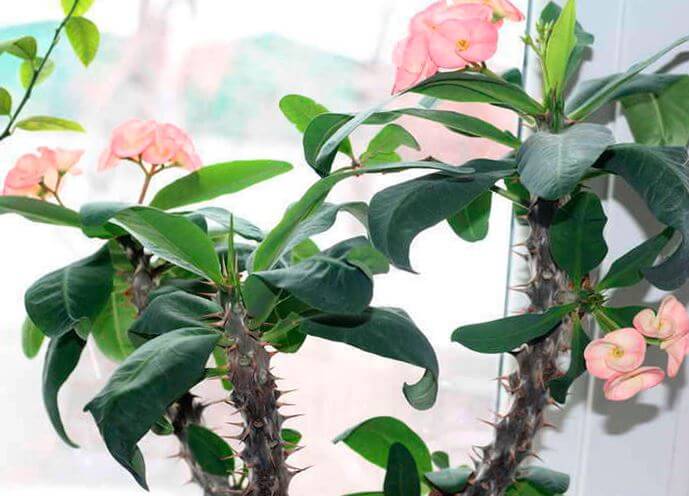
Choose a bright and sunny place for milkweed
Irrigation Features
With a limited amount, the procedure must certainly remain regular. For example, in the summer heat, it is enough to water the plant once a week. Euphorbia calmly reacts to drought.
Air humidity
It is desirable to maintain this indicator at a moderate level, although it makes sense to increase air humidity in spring and summer.
Fertilizer
Feed the plant only during its active life. Fertilizers for succulents act as nutrient mixtures. Photos and names of types of feeding for euphorbia are on floristic sites.
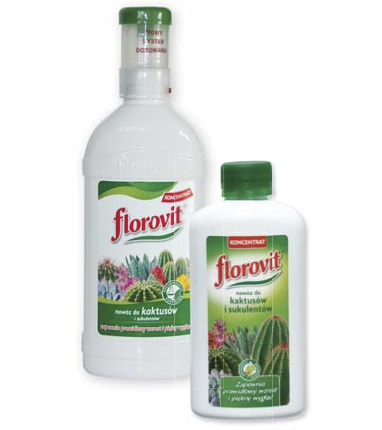
Fertilizers for succulents are suitable for milkweed
Transfer
For adults, this procedure is infrequent, performed every two years. Young growth is transplanted annually. The transition period is spring.
Priming
Humus and leaf plus clay-soddy soil are added to the sand base. Good drainage is required.
reproduction
Euphorbia mile, judging by the photo, reproduces by all known methods. It can be grown from seed. They are sown in moist soil, slightly pressing, after which a greenhouse is set up above the crops. Before germination, the soil will be covered with glass or hidden under a film.
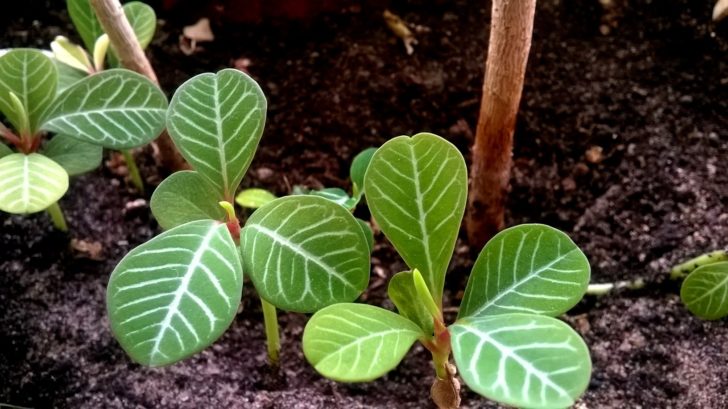
Self-sowing milkweed
You can see the process of growing a milkweed flower from cuttings in the photo.The material is harvested in the first two summer months. The cut off shoot should drain the juice. This will happen faster if it is placed in warm water. The cut point is treated with crushed coal, after which the planting material is allowed to dry slightly, leaving it to lie on a windowsill or table. After planting for the time of rooting, the pot is sent to a warm place.
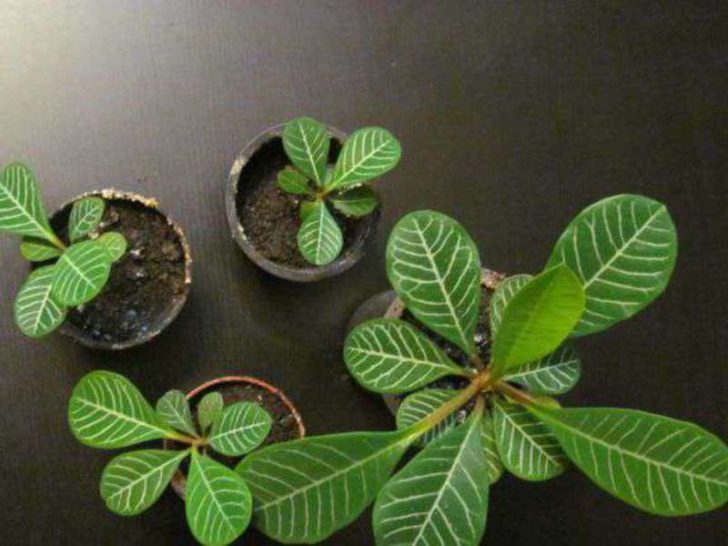
Propagation of milkweed cuttings
In addition to the milkweed mile, judging by the photo, African varieties of the plant can also give pleasure to flower growers. They are attractive because, living at home, they manage to accurately imitate the shapes and appearance of wild relatives. This phenomenon is known as convergence.
Euphorbia large-root
What is remarkable about the succulent is clear from the name. However, what many take for the plexus of roots in the photo of an indoor milkweed flower is actually a bizarrely modified trunk, from which ribbed, segmental branches already depart. On their light green background there are white stains, and the ribbed edges are covered with small tubercles, from which paired spines emerge. There are no leaves as such on the branches. They were replaced by rudiments.
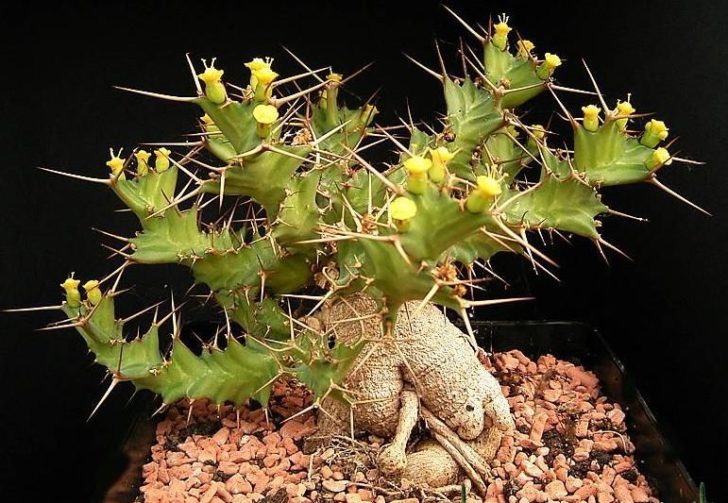
Euphorbia large-root
The plant is monumental, therefore it requires a personal "place of residence". When placed on a coffee table or a decorative wooden stand, it can act as a bonsai and invite contemplation. See how majestic a single milkweed flower looks in the photo.
The conditions for keeping the plant in the room and caring for it are without nuances, as with all succulents.
"Medusa Head"
Another amazing representative of euphorbia, which is very popular with flower growers. He conquers with the unusual appearance of the bush. The shoots of its branches stretch down, like liana-like ones, so the plant is often kept in hanging pots or on single stands. Look at this indoor view of milkweed in the photo. Creeping, wriggling processes are very reminiscent of snakes. Hanging on the sides, they look quite menacing. From afar, the green composition resembles the head of the mythical Gorgon Medusa.
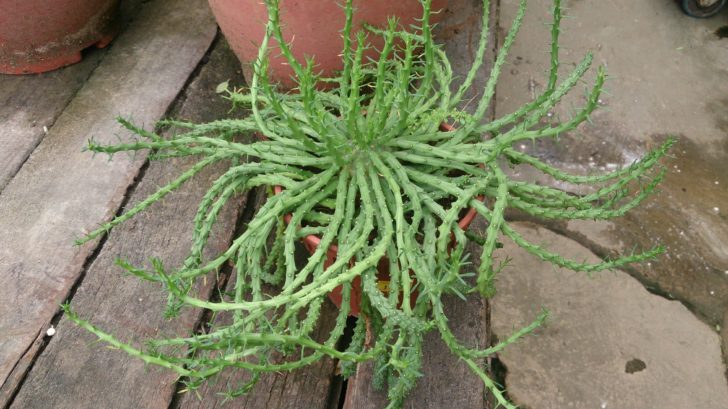
Euphorbia "Head of a Medusa"
The plant is flowering. Inflorescences are numerous, in a yellow-green spectrum, appear on young shoots.
With its exotic beauty, spurge feels wonderful in any light, but is very afraid of drafts and really needs adequate watering. The latter in winter should be reduced to a minimum. The condition is mandatory for all indoor euphorbia, regardless of type and name.
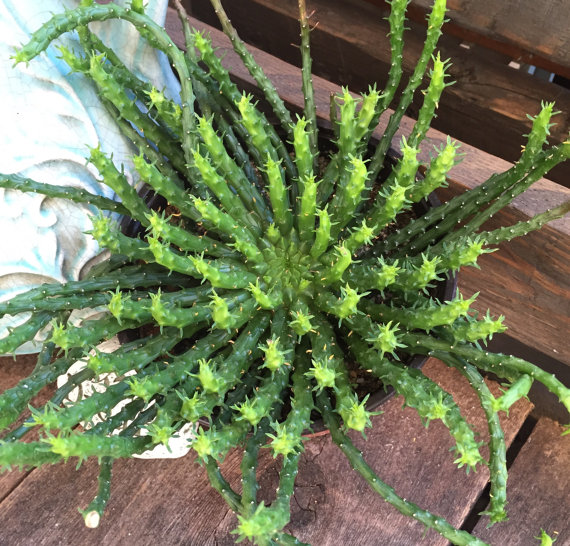
Blooming spurge "Head of a jellyfish"
Euphorbia triangular
The bushy plant has fleshy stems with well-defined ribs covered with small spines. Oblong leaves have chosen the tops of the shoots. Under natural conditions, the plant looks like a tall, one and a half meters, sprawling shrub with many curtains. With such growth, this variety of milkweed has a very underdeveloped root system, therefore, it will be necessary to take care of the stability of the bush.
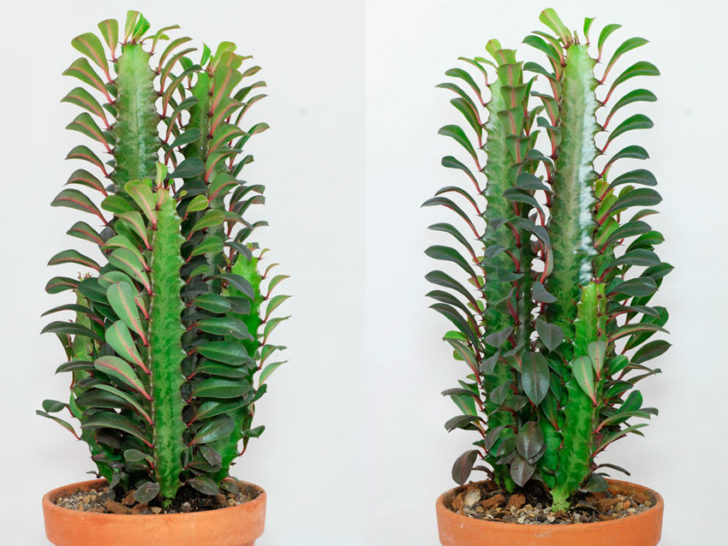
Euphorbia triangular
The plant is planted in a deep flowerpot with a high drainage layer and provides it with a reliable garter to the support. What kind of indoor spurge should have, look at the photo.
Euphorbia white-veined
The columnar, palm-like plant is extremely popular with flower growers. The variety got its name because young individuals have large oval leaves attached to a green ribbed trunk, as if drawn with white veins. This variety of milkweed blooms inconspicuously, but this does not prevent it from remaining the compositional center of the winter garden. Other types of indoor euphorbia, photos and names of which are found in catalogs, will not produce such an effect.
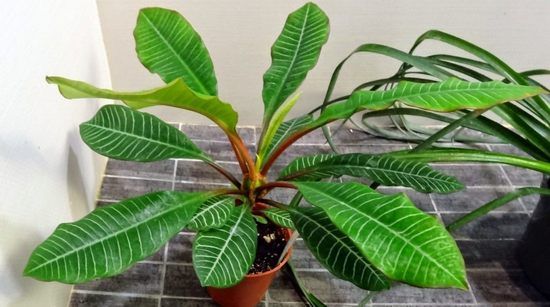
Euphorbia white-veined
Propagated by seeds. The latter germinate quickly and actively grow.
Euphorbia multiflora
Nice low shrub. Grows up to 70 cm tall. The variety is decorative.The flowering period is May-July. Chameleon inflorescences gradually change the shades of flower petals from golden yellow to lemon green.
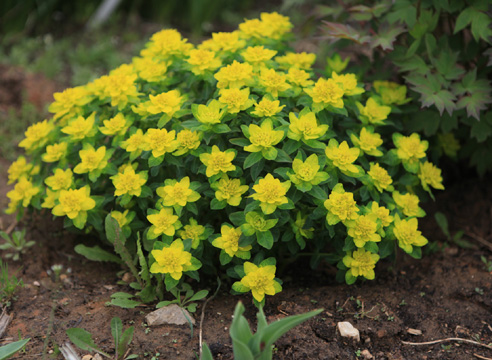
Euphorbia multiflora
Look at the photo of the milkweed flower. The plant does not lose its attractiveness even at the end of the color period. It will retain lemon-colored foliage until late autumn.
Increased frost resistance allows the use of this type of indoor milkweed (see photo) in landscaping the garden and decorating balconies.

Flowering of milkweed multiflorous
garden spurge
Grade "Silver Swan"
A tall perennial with eye-pleasing silvery foliage drives up to 75 cm in height. The flowering period is May and June. During this period, spurge is covered with cream flowers.

Euphorbia “Silver Swan”
The variety is not cold hardy. Planted in medium nutrient soil. Grows well in open areas. For wintering, it goes to cool, dimly lit rooms.
spurge ammak
In the photo, garden perennial spurge is remarkable in that it is a real tree with dark brown and green branches covered with large, up to four centimeters in diameter, leaves. The variety is whimsical to the acidic composition of the soil. For comfortable growth, he needs soil mixtures with a Ph of 4.5 to 6.
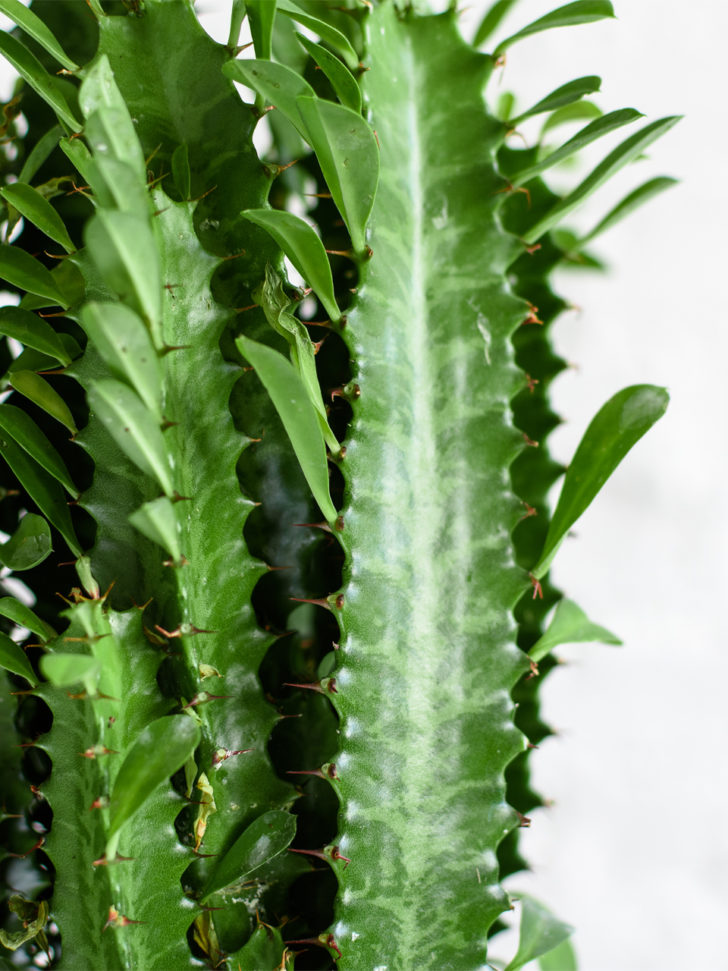
Drought tolerant spurge ammack
Otherwise, the view is unpretentious. It is drought-resistant, can be planted in the southern and western sector of the site.
Wintering should take place in a heated room. The flowering period is all year round.
What does the planting of such a milkweed flower look like, look at the photo.
Euphorbia cypress
Herbaceous perennial grows from 15 to 40 cm long. There are no leaves as such. It is replaced by needles similar to needles, which give the appearance of the plant airiness. During the flowering period, the plant resembles a fluffy cloud.
The bush, like many representatives of indoor species of euphorbia in the photo, is highly decorative. In early spring, it has a bright green color, but during the flowering period, the brightness of the green is noticeably muffled by the yellow color of the flowers thrown out in the inflorescences.
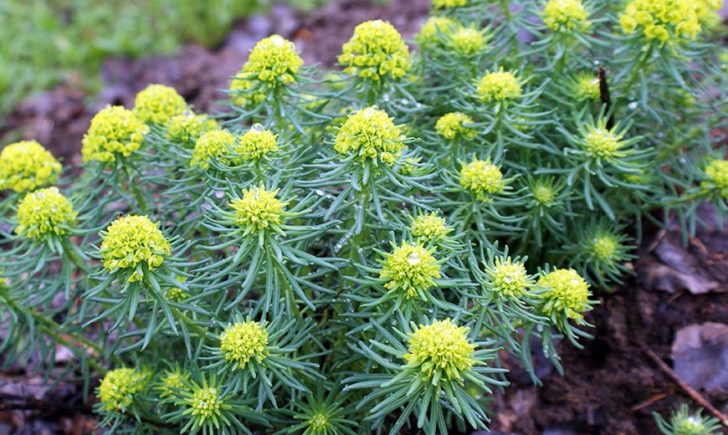
Euphorbia cypress
Euphorbia cypress is involved in the design of paths, flower beds. It looks good in compositions with conifers. In loose planting forms real thickets. Look for options for planting a milkweed flower in the photo.
The variety is frost-resistant, tolerates the European climate well and can even grow in Siberian conditions.
Euphorbia almond-shaped
A variety loved by gardeners for its bright, unusual light green flowers. Beautiful inflorescences are crowned with densely leafy high (up to 60 cm) stems. The flowering period is short. Starting in April, it will be completed by July. Looks like garden perennial spurge, look at the photo.
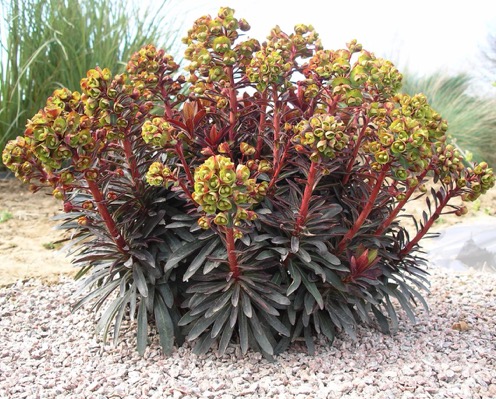
Euphorbia almond-shaped
The plant is thermophilic and not too frost-resistant, so it can be grown only in the southern regions of the country, where in winter the thermometer does not fall below -100C.
spurge bordered
This species is from the category of annuals. For unusual forms, gardeners nicknamed the plant an alien. But they, I euphorbia bordered, do not give flowers at all, like other varieties. They are quite inconspicuous and small. The secret of the decorative effect of the milkweed flower is shown in the photo. It lies in the leaves, which turn white along the contour during the flowering period. The bush seems openwork, light, amorphous. In such a colorful form, euphorbia will stand from mid-July until late autumn.
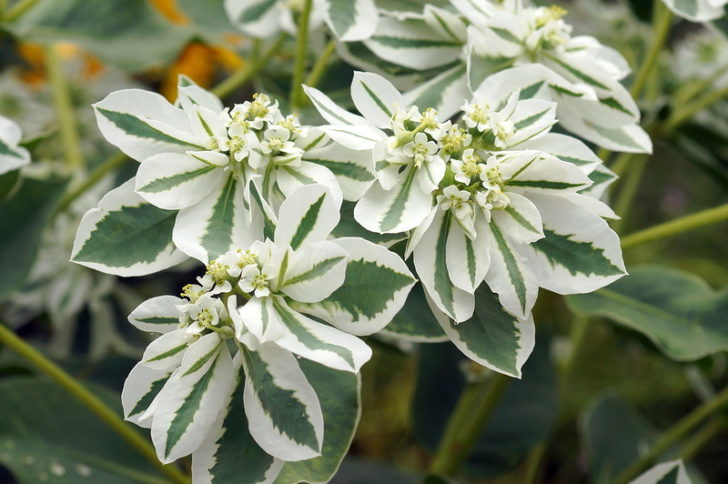
Euphorbia bordered belongs to the category of onoletnikov
Getting a plant in the garden is easy. It propagates by seeds, which are distinguished by excellent germination. This variety of euphorbia prefers peaty, slightly acidic soil and does not like direct sun.
spurge myrtle
The most beautiful representative of perennial garden spurges, as they say in the photo, which is highly recommended for lovers of rockeries and other decorative delights in the landscape.Low graceful bushes are valuable for the unusual geometry of the arrangement of the leaves and their non-standard color in a bluish-gray solution. The plant propagates easily. Seeds and cuttings quickly germinate and take root.
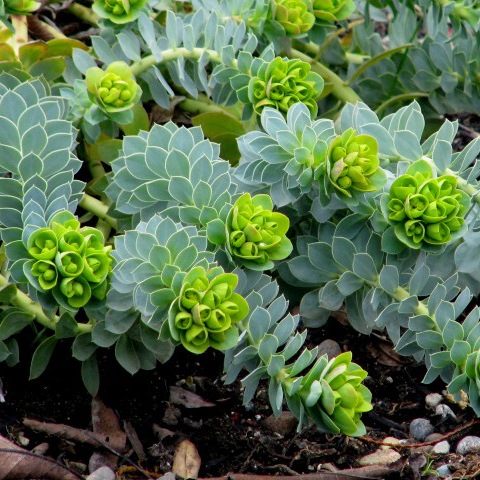
Perennial spurge myrtle
Myrtle spurge loves light and well-drained soils. The flowering period is only two months: May and June. For the winter period, it is necessary to move the plant into the house.
back to index ↑Conclusion
The abundance of varieties is confusing. Catalogs will help you decide what to choose in the house and what to plant in the garden, where types, photos and names of euphorbia are supplemented with descriptions.
Photo gallery - spurge in the garden and at home
Video

